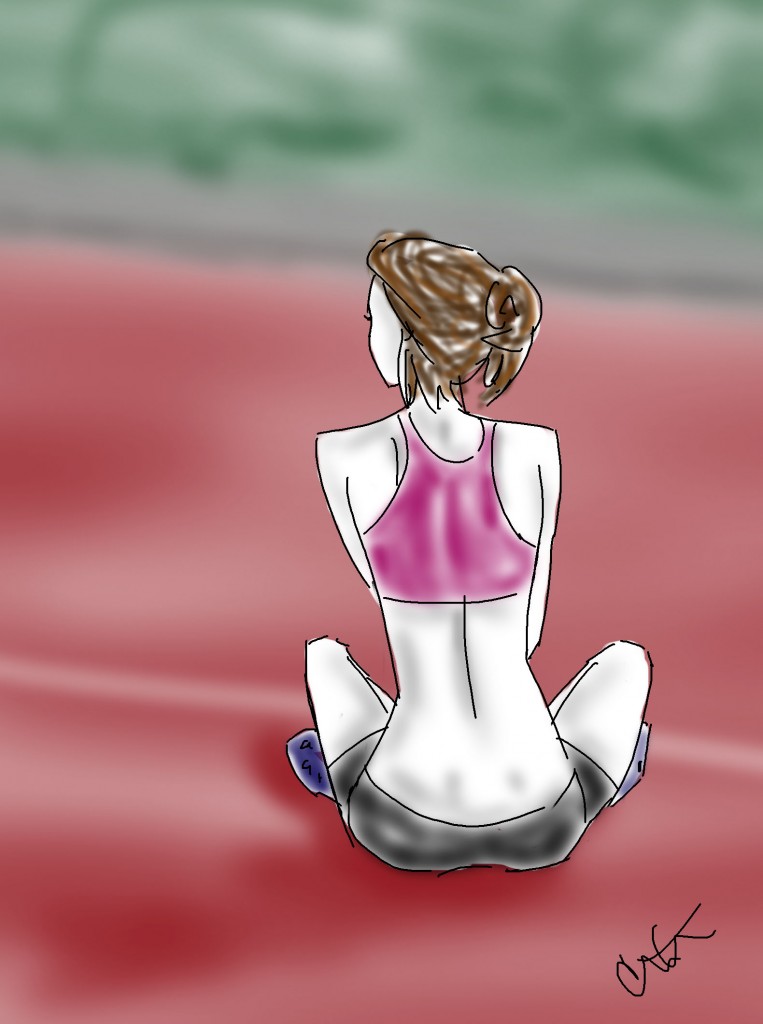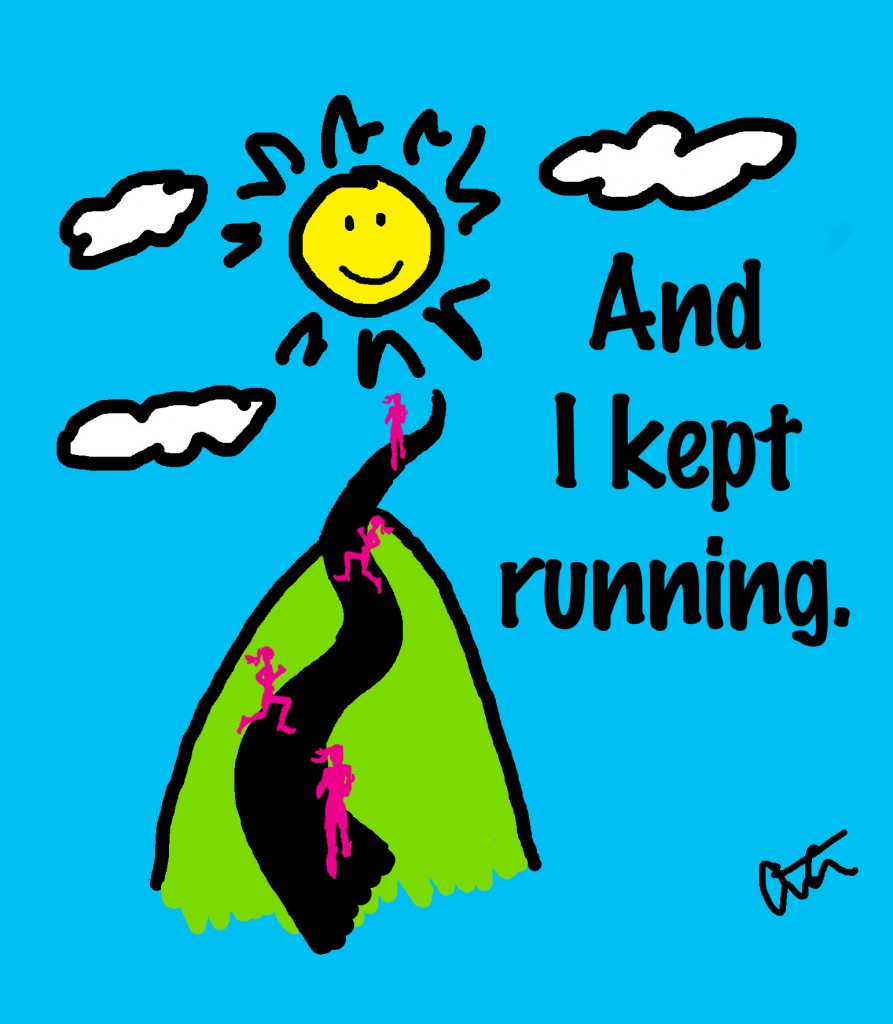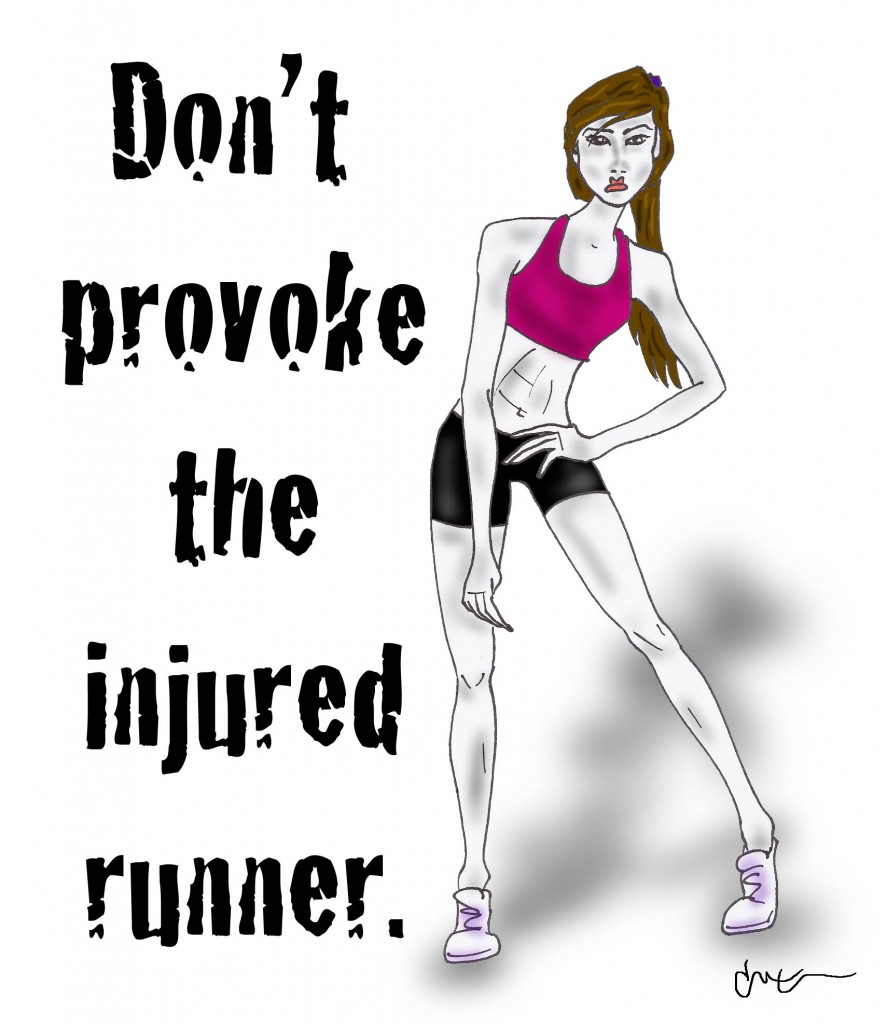Every runner is imbalanced. I’m not talking mentally (although we’ve all got our quirks!) but physically; your body isn’t two perfect mirror images between right and left, some muscles are naturally stronger than others, some areas tighter and others looser.

For the ‘normal’ person that’s not such a huge deal, but when, as runners, we are demanding that our bodies carry us for miles and miles in the same repetitive motion, those imbalances become glaring weaknesses. Weaknesses not just in efficiency and translating to potentially lost time, but more importantly setting you up for injuries.
A runner’s imbalances are the slumbering volcanoes for injuries. Interestingly, the injuries can manifest in some tricky to diagnose ways, as in you may be having problems with your feet but the culprit is a weakness in your gluets. [Actually, there was an excellent piece in the September issue of Running Times on just this.]
The best way to deal with an injury is to be proactive before you’re actually hurt; you can’t stop them all but you can do your best. Think of runner upkeep and care like the safe sex talk you get in high school. 😉
Your imbalances are going to be different from your running friends, but many common points of weakness center around the core or near it:
* hips
* hamstrings
* glutes
* back
* ankles [not near your core, but one for five aint bad…lol.]

When it comes to the hips, adductors, abductors and glutes it’s like a minefield. So many people have issues: tightness here, weakness there, slacker muscles making other muscles pick up the work, you name it. This has the trickle down effect to knee issues and tons of lower leg problems. That’s why improving flexibility in the hip region and strengthening those small, intrinsic muscles is so important.
Here are some quick exercises and stretches that you can do to try to bring some balance to your imbalance:
Core
* Planks and leg raises: I did a whole post on probably my all time favorite core routine, it takes the plank and kicks it up a notch. You get nearly every muscle engaged, if you do it right, and as you get more balanced you integrate leg raises which is giving you a double whammy on working those glutes and hamstrings. Please read this routine, your life will never be the same again. 😉
Glutes and Hamstrings:
* Back Bridge: Lie on your back, pressing the small of your back flat to the floor to engage the core, knees bent in the air, feet on the ground a fair distance from your bum. Then squeeze your glutes and lift your butt into the air until your body from your knees to your shoulder-blades are in a straight line. Lower back down and repeat, do sets of 10-15.
* Hamstring Ball Roll: Lie with your back on the floor, arms at both sides, legs straight ahead and place your feet on top of an exercise ball. Lift your torso up so that only your shoulder blades are on the floor and arms at either side for support. Bring your knees to your chest by rolling the ball inward towards your bum and then roll back out. Repeat for sets of 10-15.
* Toe Touch Balance: Stand up and then balance on your left foot. Keep your left leg straight and reach down to your left foot leading with your right arm, going across your body. The trick here is to keep your balance without that right leg on the floor. Raise back up to the starting position and repeat 10 times. Then flip and balance on the right foot.
Mobility:
* Hip stretches – I did a whole post on that; strengthening is one aspect and improving flexibility and mobility is another.
* Leg Swings – Here’s my post all about those.
Ankles:
* Pillow Balance: Ankles are prone to rolls and you want the small muscles around the ankle strong and supple. Balancing on one of those Bosu balls or a pillow can really improve your ankle strength. Start by standing on a pillow, balancing on one foot and hold it there for a minute or two…you’ll notice that it’s going to be easier on one side than it is on the other, so you’ll see where your imbalance is between right an left there. Then when you’ve got that try doing the above Toe Touch Balance exercise on the pillow.
* Calf Exercises: THIS post about calf raises applies here and also helps with Achilles issues.

The argument of sanity aside, every runner is imbalanced in a way unique to them. Sometimes it takes a little hunting around, or an injury, for you to find your’s but if you do all you can to get as balanced as possible before an injury strikes both your running and your sanity will be better off. We all know how beastly those injured runners can be!
1) Do you know what some of your imbalances are? Do you work on them at all?
2) Do you stay pretty diligent about runner upkeep and care? Are you really good about stretching?
3) Have you gotten an injury that is due to some kind of imbalance you have? How did you figure out what the culprit was, did it take a lot of searching to solve the issue? Do you have any specific exercises/stretches you now do to make sure you don’t get re-injured?

I can not convey how helpful this post is Cait – thank you! You set it all out so clearly and sum up my injury-prone challenges perfectly. My back has quirks that lead to headaches (and those quirks are often aggravated by running…) but it is the lower body imbalances that complicate things in the form of ITB pain and knee pain. I knew of some of these exercises but don’t do them all regularly. I will be making more of an effort to tick them all off now!
i’m so happy this post was right up your alley!! yes, knee problems are SUPER common due to back and hip mis-allignments. so if u can sneak in these exercises/stretches, trust me u’ll be feeling better and ur knees will love you. 🙂 PS-i did a follow-up post today with video demo’s of some of those moves, just if u were interested 🙂
This is so great! I am right there with you Kari on the IT Band… ugh. It’s like having a dull headache. I am also learning that I might have weaker ankles. Especially my left one. I think it’s so important to know the things that you have written in this post. I have always struggled with listening to my body because I was afraid to gain a few pounds, but when it comes to running I am finding out that it’s much more important to listen to it! 🙂 I realized this morning that I haven’t taken a rest day in probably two weeks. So, rest it is. 🙂
Great post Cait!
rest day for u indeed! i’m glad u’re learning to listen to ur body and think in terms of “wat’s the best choice for my running”. For that IT band, have you ever tried using the foam roller??
Only a couple of times… but I am going to use it tonight! 🙂
I’ve learnt about most of my imbalances through injury, and while I feel a lot more symmetrical these days, I’m still very aware of the odd bits and pieces. I can definitely relate to ALL of those problem areas.
What I thought was a hip/glute/core problem appears to be an ankle problem instead. Go figure.
I love what you say about ‘normal’ people not having to worry so much. So true. None of these problems really exist until you enter runner land.
haha…that last part…so true!! i think it’s funny how there are probably SOOO many ‘normal’ people with out of whack-a-doodle everything but they never really ever find out or care because they’re not runners. 😛
Pingback: Lights, Camera, Action…Core and Flexibility!! Video demonstrations for your running and entertainment |
This is a great post and unfortunately soooo topical for me right now as I deal with some foot/flute issues on my left side…hmmm the same side as my old knee injury…
Definitely going to try some of these!
awww, i’m sooo sorry…ugh, those darn injuries are the worst! heal up fast!!
Pingback: Runner in Flight: Tips for the fidgety runners in travel |
Pingback: The Greatest Test of a Runner’s Mental Toughness is an Injury |
I know that this post was created nearly a year ago, but I just started running about 2 months ago and came across your thoughts. I’m training for a half-marathon in April and have been PLAGUED by injuries since I started. It’s so frustrating having to take days off to rest when I feel like I should be training. I have one foot that subinates and one foot that pronates, which has caused problems throughout the rest of my body. It’s the most bizarre thing I’ve ever heard of. So, it was really validating to read that “normal” people don’t have to worry about these issues, and injuries come swiftly runners because most are unbalanced.
Even though I’m a year late, I really appreciate your thoughts.
Do you have any advice on how to correct two different feet? Right now I am having A LOT of calf pain on the outter-right of my right calf, close to my knee. This weekend I dislocated the Cuboid bone in my left foot and now the attached muscle hurts all the way up to my knee! It’s such an odd muscle to try to stretch. But from now on, I want to be proactive about my feet to prevent future injuries. 🙁
I’m SO sorry to hear about your foot woes! I always love my commentors so let’s see if I can be of some help. i’d suggest u go see a podiatrist right away, especially with the supinator/pronator thing because they can set you up with some orthotics because u may need an arch support on that one side. and u’ll definitely want to be EXTRA diligent in finding the perfect pair of shoes. i’m thinking u go for a high-end cushion/stability combo…but again u should see a podiatrist.
for ur calf pain, i did a post on self-massage here: http://caitchock.com/a-self-massage-survival-guide-and-running-through-the-holidays/
i did a post on achilles stretching/strength here: http://caitchock.com/know-your-weak-spots-and-care-for-them-all-about-strengthening-your-calf-muscles-and-keeping-your-achilles-tendons-healthy/
then do a lot of icing on the area. try doing 15mins twice a day. take some anti-inflamatories and make sure the bones are all back in location and in place. let me know how all of this reads and always feel free to send me an email too! take care and let me know how it goes!
Pingback: So You Can’t Run Right Now…. | Prairie Princess Runners
Pingback: It’s All About That Bass… | Confessions on a Gym Floor
Including the appropriate exercises in your routine can make you stronger, more flexible, and more efficient in everyday activities and athletic performance.
Pingback: It’s All About That Bass… | Fearfully Made, Wonderfully Fit
Pingback: It’s All About That Bass | Train Strong, Live Strong